Spotting an albino or leucistic bird is a rare and exciting experience! Have you ever seen one in North America?
In this article we are sharing amazing sightings of birds in North America with this unusual condition.
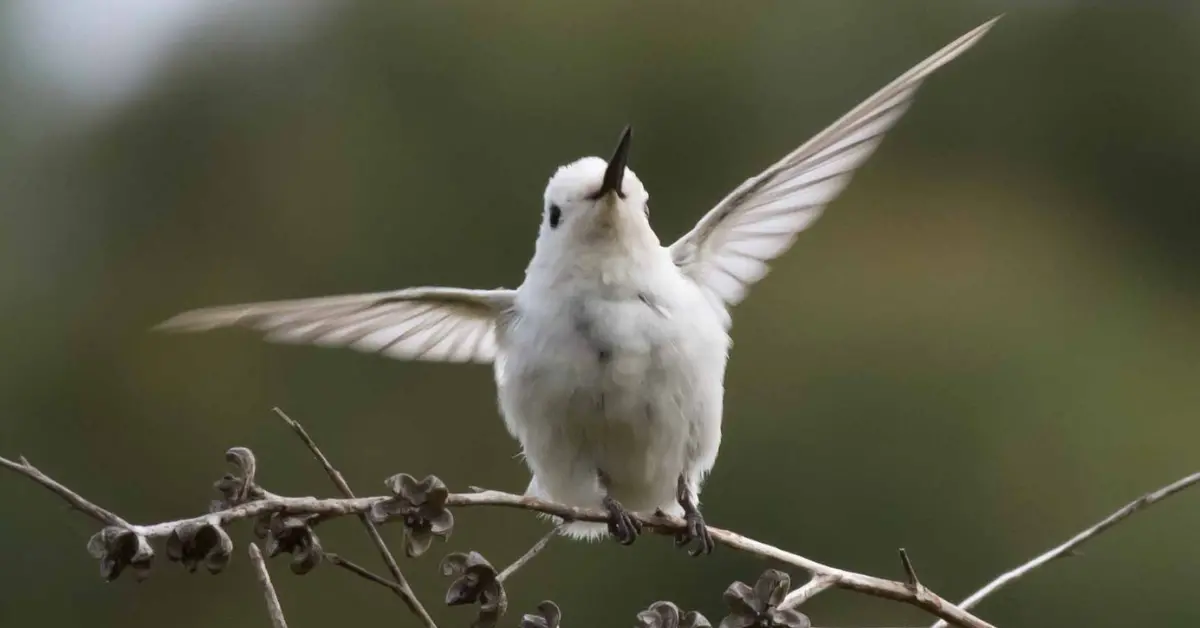
First, let’s clear up what these terms mean.
Albinism occurs when an animal doesn’t produce any melanin – this is the pigment that gives color to an animal’s hair/feathers, skin and eyes. Albino birds are completely white with pink or red eyes.
Leucism is more common and is a genetic mutation preventing melanin from reaching some of the animal’s hair, feathers or skin. Leucistic birds can have small white patches, a faded overall color or even be completely white, but will not have pink or red eyes.
Roughly 1 in 30,000 birds are either leucistic or albino. Of those, only about 4% are true albinos. To put this into perspective, that is about the same chance of you being struck by lightning in one year!
I’ve spotted leucistic birds a handful of times, but never an albino bird. Below are some amazing sightings from birders across North America of albino and leucistic birds.
Sightings of Albino & Leucistic Birds in North America
Albino Hummingbird
Yes, amazingly, even hummingbirds can be albino.
In September 2010, Michael Brown was lucky enough to spot this beautiful albino hummingbird (below) in Vigo County, Indiana.
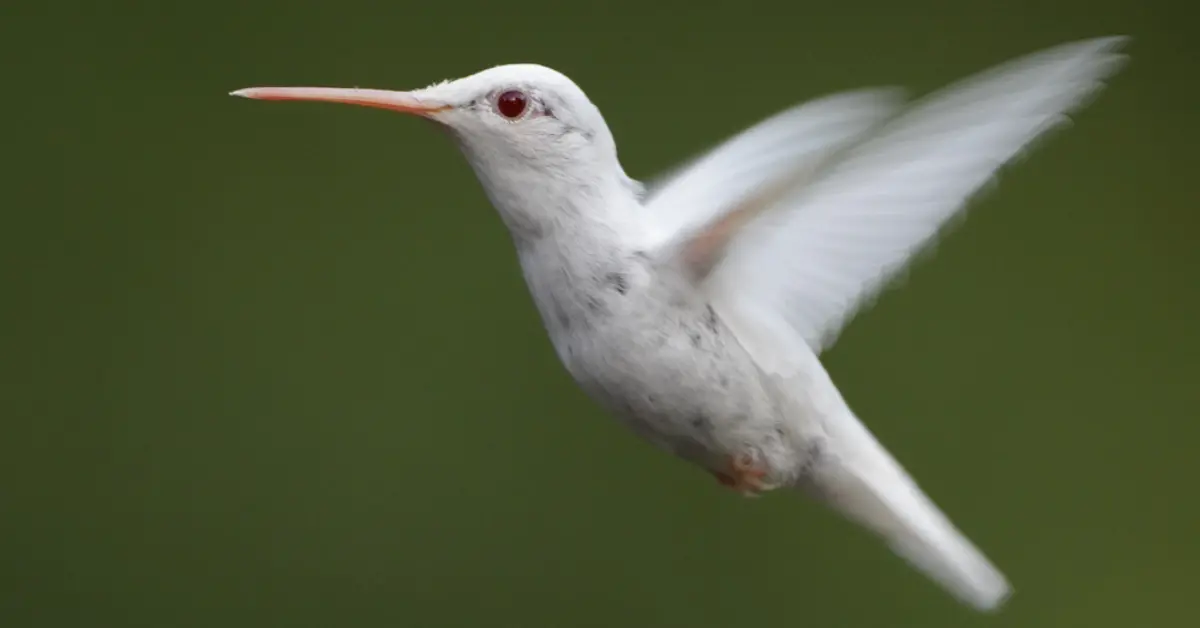
It can easily be confirmed as an albino, and not just leucistic, by the clearly visible pink eye, pink beak and completely white feathers. What an incredible rare sighting!
Albino American Robin
The American Robin, one of the most beloved backyard birds in North America, can also have this rare condition.
The amazing albino robin, pictured below, was spotted in Ontario, Canada by Judith Lessard in June, 2022.
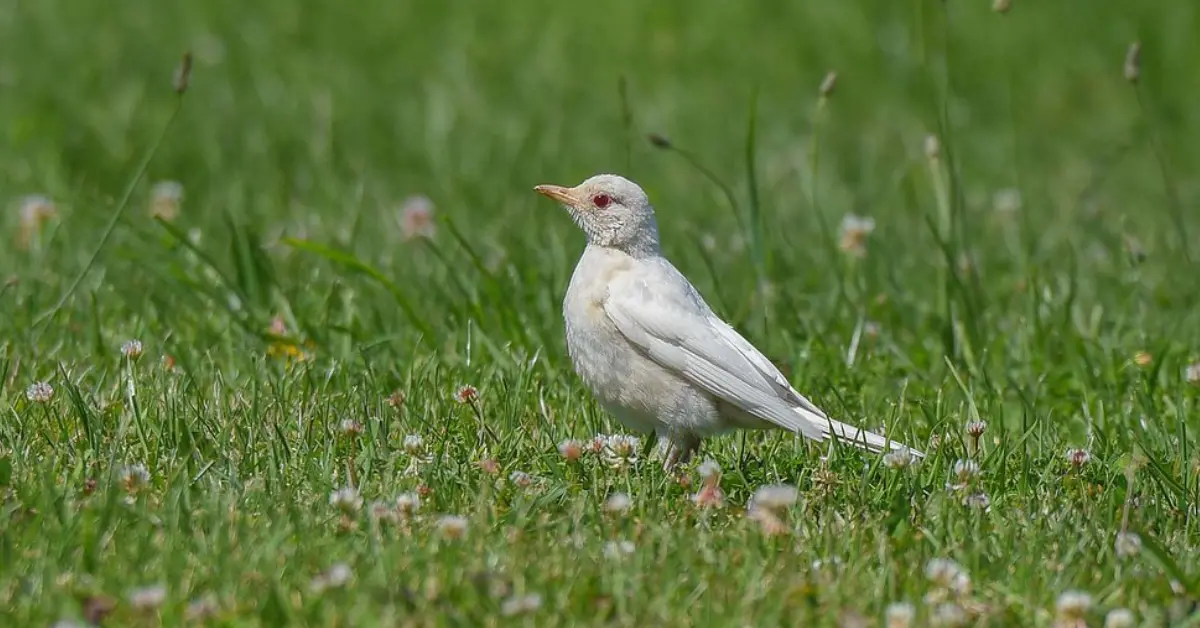
The pink eyes, yellowy bill and completely white feathers of this American robin, clearly identify it as a true albino. I hope one of these makes its way to my backyard!
Albino House Sparrow
House sparrows, one of the most widespread non-native birds in North America, can also be albino.
Michael Kirtley spotted this eye-capturing fledgling house sparrow, being fed by its mum, back in April 2017.
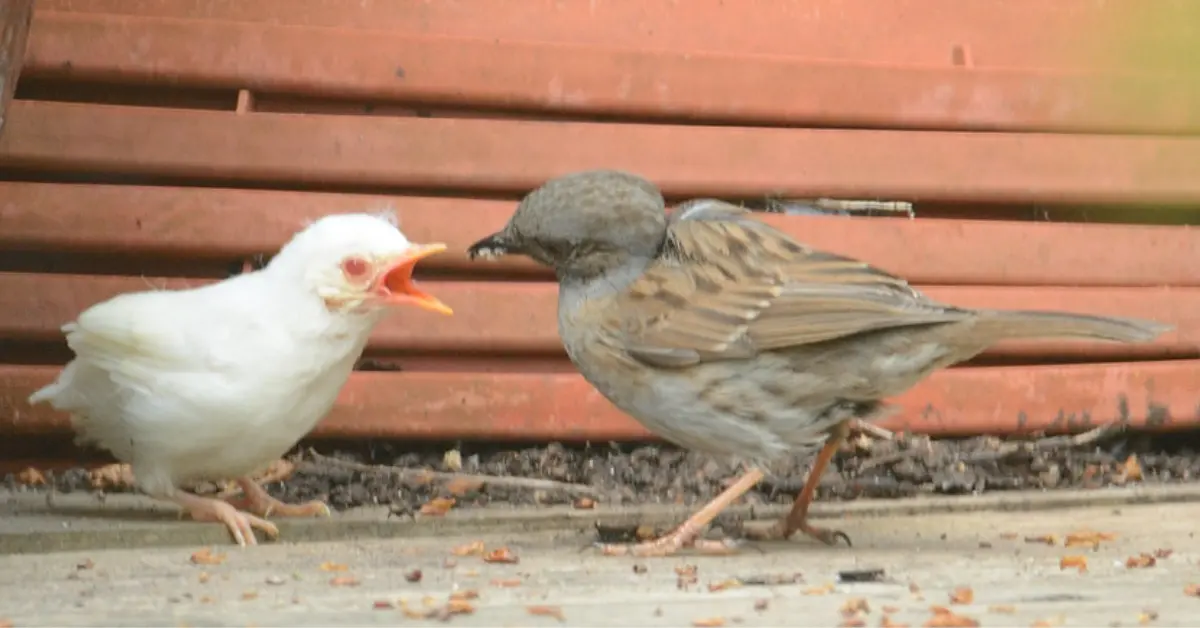
This picture demonstrates an important fact about albino birds: you are more likely to see an albino chick or fledgling than an albino adult bird.
Sadly, this is because scientists believe that the majority of albino birds die soon after they fledge and most of them do not live long enough to reproduce. The reason why – you need to stick around to the end of the article to find out!
Albino Dark-eyed Junco
An albino dark-eyed junco isn’t dark-eyed at all – instead, like most other albino animals, it has pink eyes.
This striking albino dark-eyed junco (below) was spotted by Frank Lospalluto in July 2019 in Southern Oregon.
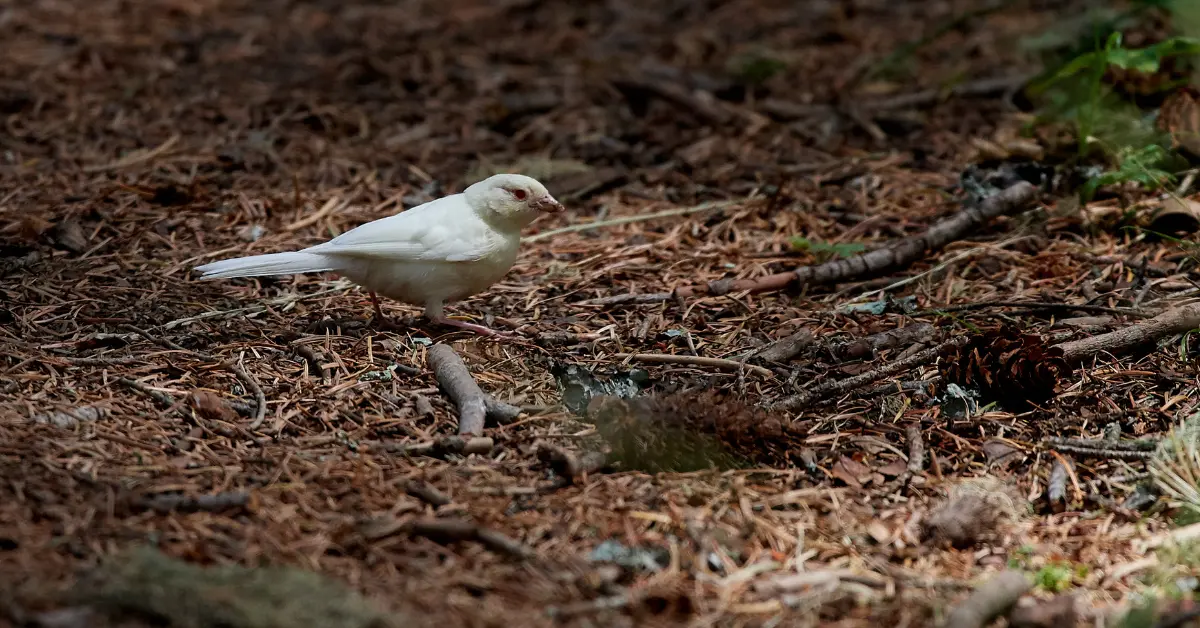
Again, the pink eye and completely white coloration clearly identify this dark-eyed junco as an albino bird.
Leucistic Red-tailed Hawk
It isn’t just small backyard birds that can be albino or leucistic – even seabirds, ducks, and birds-of-prey can have these conditons.
Jean Graham saw these red-tailed hawks (below) on her morning walk in March 2017. She captured a fantastic photo, showing a normally colored hawk (left) sharing the same perch as leucistic hawk (right).
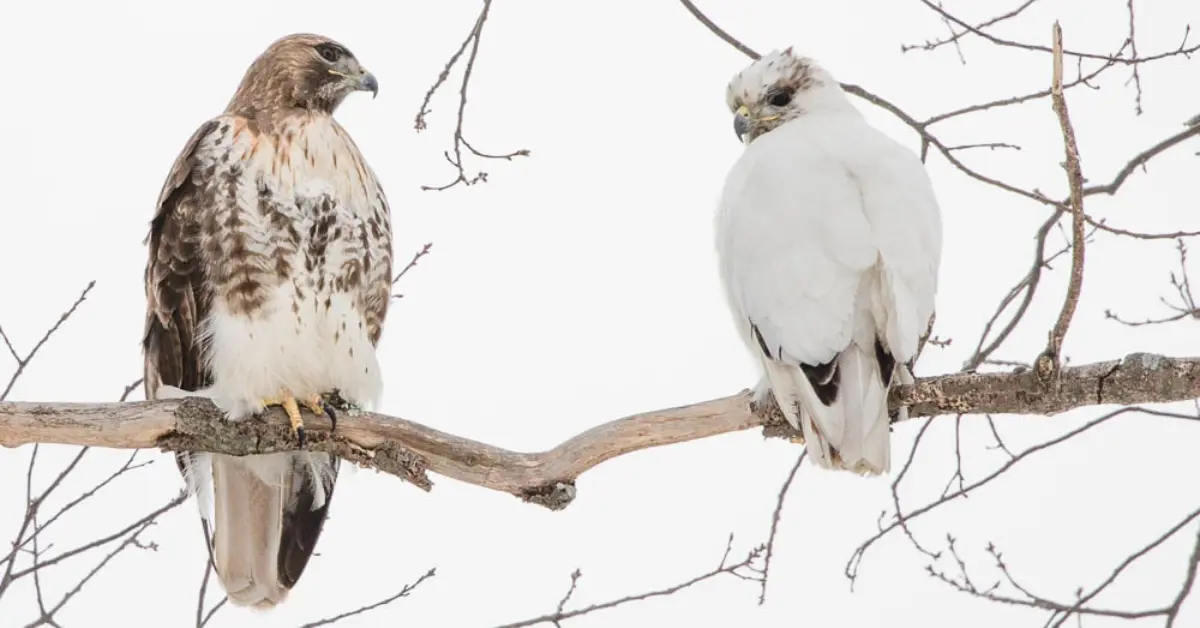
The red-tailed hawk on the right has almost completely white feathers. It also has dark brown primaries and dark coloration on its head – for this reason, and the absence of pink eyes, this bird is not albino, but, leucistic.
Leucistic American Crow
American crows are a well-known and widespread bird, identified by their large size, straight bill and completely black coloration. So spotting a leucistic American crow would be confusing – at least at first glance.
Dominic Sherony found this all-white, leucistic American crow (below) back in November 2009.
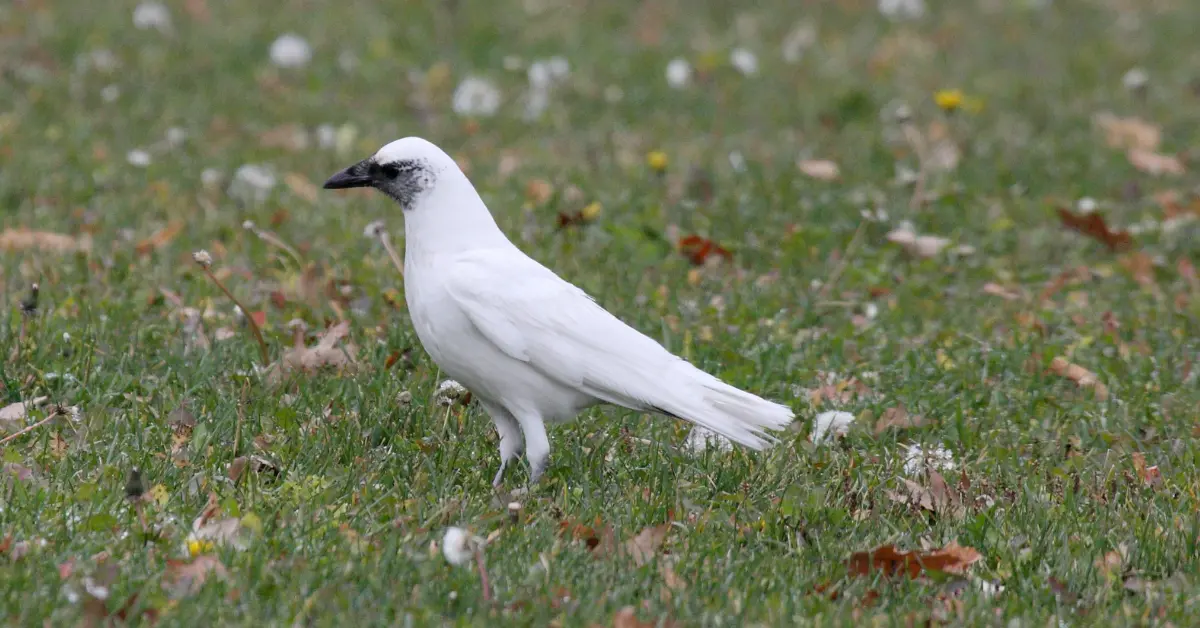
Although this American crow is almost completely white, its dark face, eyes and beak, reveal that it is leusitic and not albino.
Leucistic Red-winged Blackbird
Blackbirds are thought to be the type of bird most affected by leucism, based on many observational sources.
This leucistic red-winged blackbird was found by Sandra Gilchrist in Pickering, Ontario in 2013.
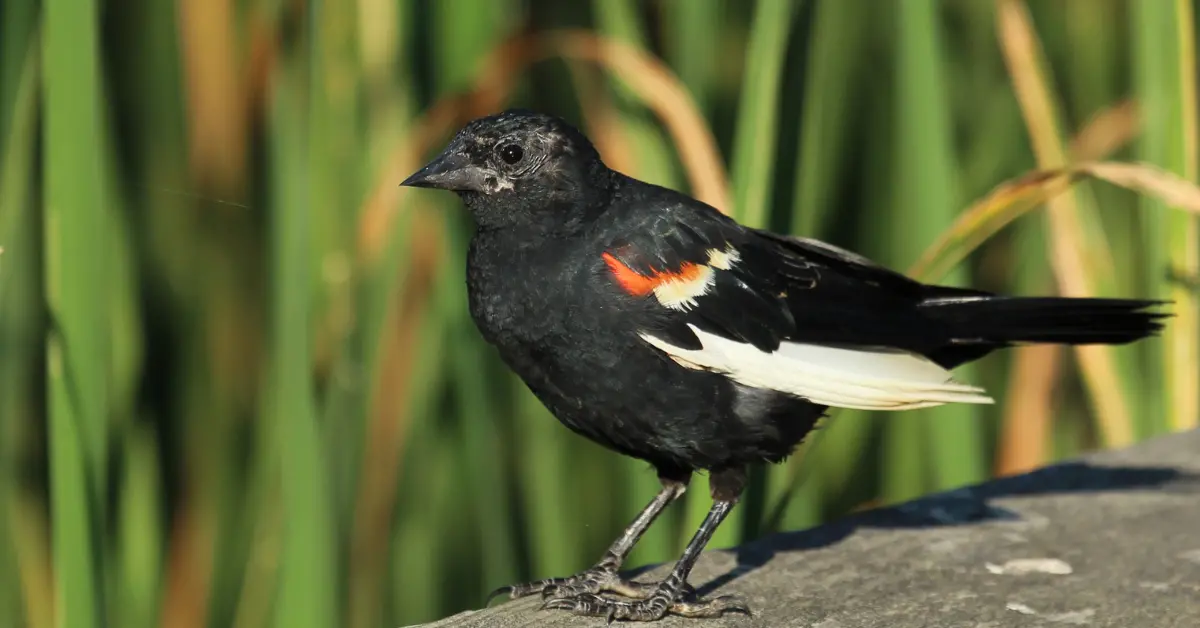
This picture demonstrates that leucistic birds don’t always have hugely different coloration, and can just have a few small white patches or feathers. This red-winged blackbird differs from the normal coloration due to having some white wing feathers and a patchy white head.
Leucistic Black-capped Chickadee
What do you call a black-capped chickadee without its black cap?
A leucistic black-capped chickadee!
Arvo Poolar captured this fantastic image (below) of a cap-less black-capped chickadee in November 2022 in Ontario, Canada.
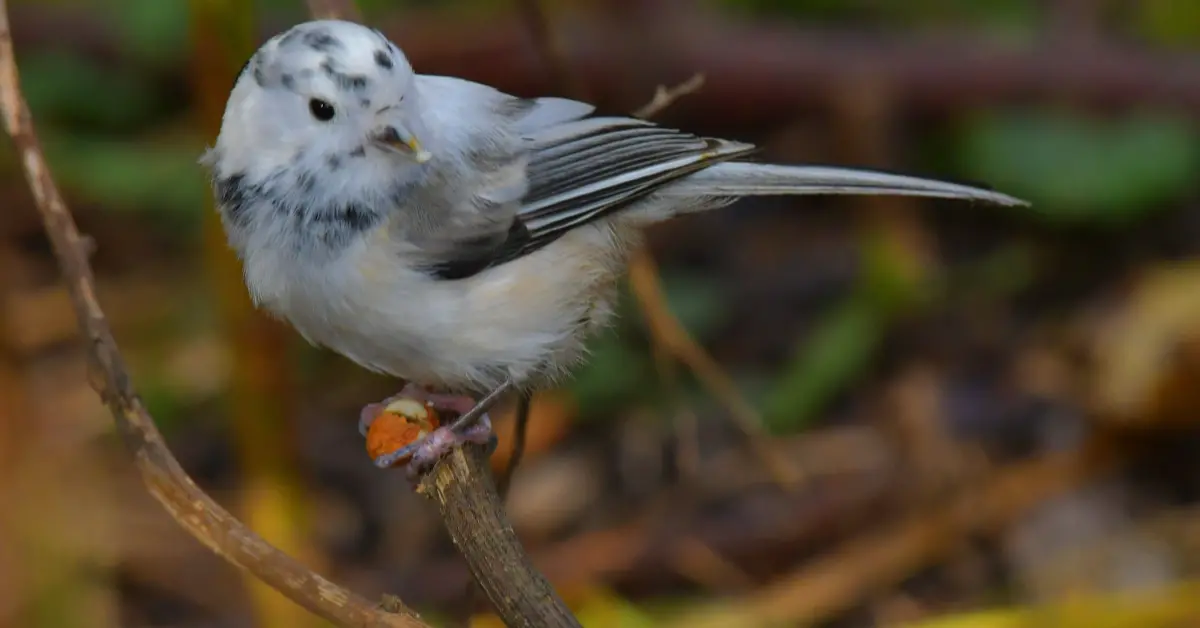
Without the characteristic black cap and throat, its much harder to see that this bird is a black-capped chickadee. People often need to call in the help of expert birders to find the true identity of a leucistic bird they have spotted.
Leucistic House Finch
Female house finches are already tricky to identify (check out our fool-proof guide here), but when you find one with leucism, it makes the challenge even greater!
This leucistic female house finch (below) was spotted by Steve Jones in LaBelle, Idaho back in December 2019.
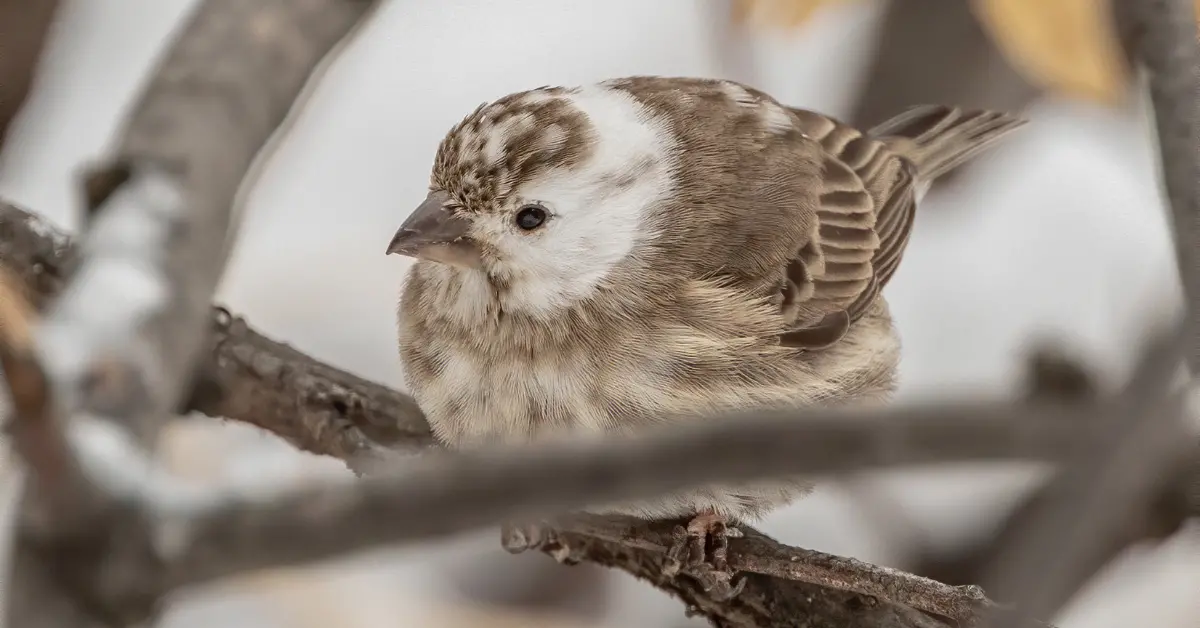
The appearance of this bird is similar to a normal female house finch, but with a white face marking and lighter overall coloration.
Again, leucism is a spectrum of coloration loss – some leucistic birds are completely white while others just show small patches of faded coloration.
Why Do Albino and Leucistic Birds Have Lower Survival Rates?
Albino and leucistic birds are stunningly unique, and I can’t help being amazed by the sightings above. But, unfortunately, being a bird with albinism or leucism comes with several disadvantages.
Survival Disadvantages of Albino Birds
- Albino birds cannot produce melanin, a pigment crucial for eye development – as a result they often have poor eyesight
- Melanin also strengthens feathers – without this pigment albino birds have weaker feathers that are more prone to breaking.
- The white feathers of albino birds make them conspicuous to predators – drastically reducing their changes of escaping predation.
Albino birds have hugely reduced survival prospects and most don’t live until adulthood.
Survival Disadvantages of Leucistic Birds
- The feathers and eyesight of leucistic birds may be stronger than albinos, but their abnormal coloration still prevents them from camoflaging – as a result they are vunerable to predation.
- Research suggests that leucistic birds are often smaller, likely due by nutrient deficiencies in the nestling stage – this affects their overall health and survival.
Leucistic birds can have reduced survival prospects but, despite this, they often live long enough to reproduce.
Bonus picture…
For those of you who have stuck around until the end of this article, here is a bonus picture of another amazing albino animal.
Have you ever seen an albino squirrel?
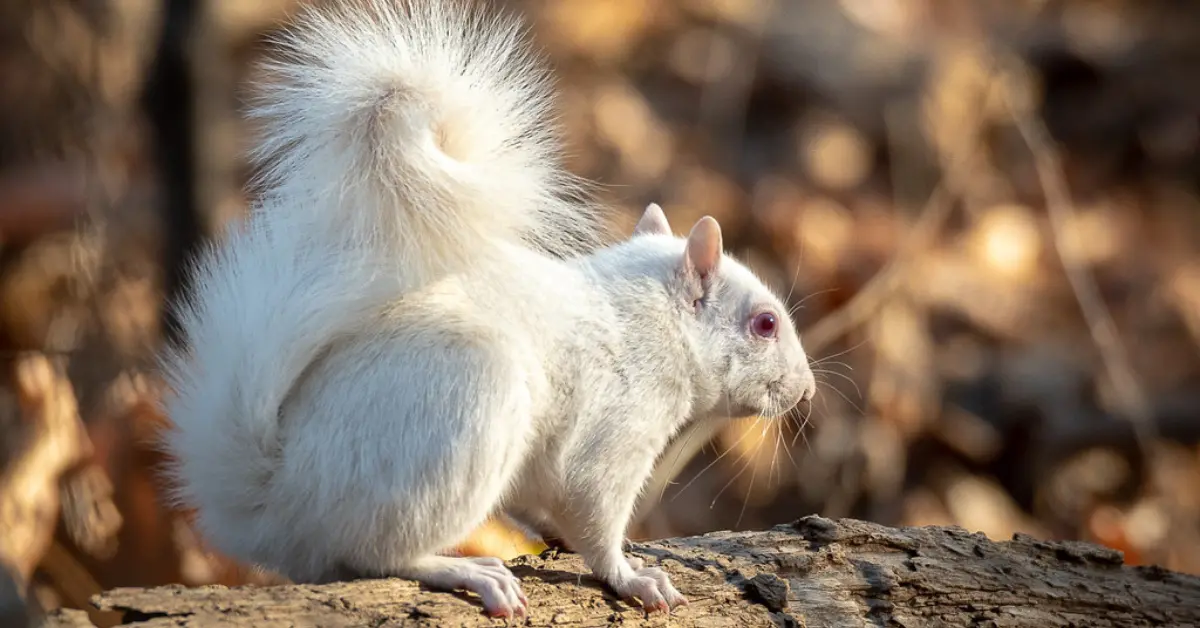
Now you have!
